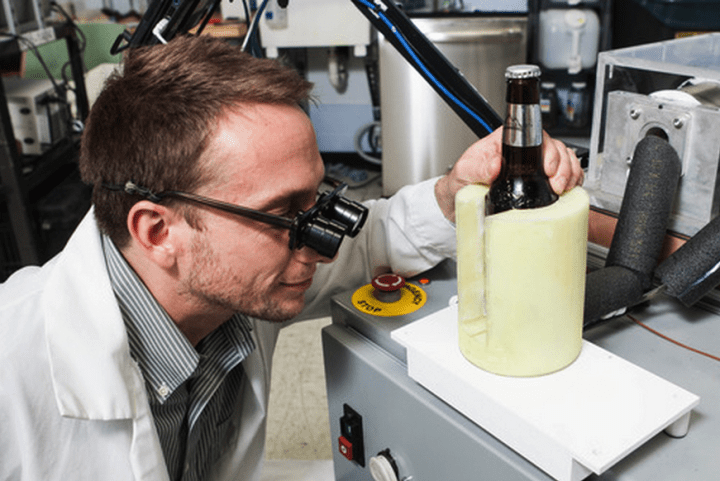
How cool is this? General Electric’s research and development wing has developed a new technique that uses magnets to achieve temperatures cold enough for refrigeration. The breakthrough system is projected to be up to 20 percent more efficient than current refrigeration systems, and could be inside your fridge by the end of the decade.
It’s still quite a long way from making its way into your kitchen, but because it’s so much more energy efficient, the technology could very well become the norm in the future. “This is a big deal,” says Venkat Venkatakrishnan, head of GE’s research team. “We are on the cusp of the next refrigeration revolution.”
So how does it work? The system uses a water-based fluid flowing through a series of magnets to transfer heat, rather than a chemical refrigerant and a compressor. To create a cooling effect, this system takes advantage of a century-old discovery called the magnetocaloric effect. First observed by German physicist Emil Warburg back in the late 1800’s, this phenomenon basically causes certain metals to heat up when placed near magnets, and cool down when they’re taken away. Check out the video below for a deeper explanation:
To make use of this effect, researchers at GE designed a sort of magnetic heat pump cascade, where each step could lower the temperature just slightly. “We are taking a chunk of heat and pushing it down the ladder, from the cold insides of the refrigerator to the warm room outside” Venkatakrishnan says. Engineers arranged the magnets in a series of 50 cooling stages, and with the help of specialized alloys to maximize the cooling effect, today they’re capable of reducing temperature by 80 degrees.
At this point, the prototype is still much too large to fit inside a refrigerator. However, considering the big strides the GE team has made in shrinking it down, it’s not outlandish to think that it’ll become much smaller in the future. “We started with a huge machine that didn’t do very much, but we’ve moved to a prototype that’s about the size of a cart,” says Michael Benedict, design engineer at GE Appliances. “The goal is to get this thing down to a size where you can put it in the refrigerator.”
What do you think of GE’s new cooling device? Sound off in the comments below.
Editors' Recommendations
- The 5 best smart refrigerators from Samsung and more in 2024
- The GE Profile Smart Mixer might be the smartest small appliance of CES 2023
- Best Abt Black Friday GE appliance deals: Ranges, microwave ovens, and more
- Best Buy 4th of July Appliance Sale: Refrigerators, washer-dryers, and more
- GE-backed startup brings crystal-clear ice to fans of bourbon and other spirits



